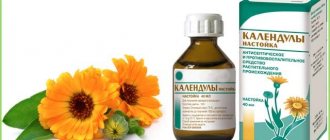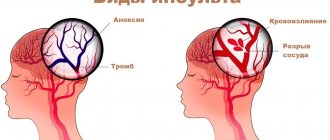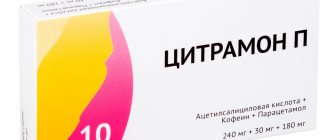Composition and dosage forms
Paracetamol is a substance from the non-steroidal non-narcotic group of analgesics with a pronounced antipyretic effect. Available in several pharmaceutical forms:
- tablets for oral administration: contain 200 or 500 mg of the active ingredient, packaged in blisters or packaging without cells;
- capsules: hard shell 500 mg;
- syrup and suspension: sweetish-tasting liquid, contains 2.4% paracetamol (24 mg per 1 ml), packaged in glass bottles of 50 and 100 ml;
- 1.5 percent aqueous solution for infusion: colorless transparent liquid in ampoules of 5 ml;
- rectal suppositories: in a dosage of 50–500 mg, packaged in cell contour plates.
Interaction
The combined use of Paracetamol with other drugs from the group of nonspecific anti-inflammatory drugs increases the risk of developing renal necrosis and failure.
High doses of Paracetamol together with salicylates are carcinogenic. This combination increases the possibility of malignant neoplasms of the bladder or kidneys.
Barbiturates reduce the effectiveness of Paracetamol. It, in turn, reduces the effect of uricosuric drugs.
The hepatotoxicity of Paracetamol increases when used simultaneously with salicylic acid derivatives.
Mechanism of action
The anti-inflammatory effect of the drug is insignificant. Paracetamol mainly acts as an antipyretic and a mild analgesic. A derivative of phenacetin inhibits the production of compounds in the body that are responsible for sensitivity to pain - prostaglandins. At the same time, it affects the thermoregulation centers, reducing high body temperature.
The drug helps with pain syndromes of various origins:
- neuralgia;
- myalgia;
- joint pain;
- algomenorrhea;
- renal colic;
- toothache;
- febrile conditions accompanying acute respiratory viral infections and other infectious lesions.
Paracetamol is quickly absorbed into the blood, does not accumulate in the body, and does not irritate the mucous membranes of the gastrointestinal tract. Metabolized in the liver. It is completely eliminated 4–5 hours after administration. The drug has a symptomatic effect: it relieves acute signs of diseases for a certain time, without affecting their intensity and duration.
Paracetamol overdose
Exceeding the specified dose of Paracetamol may lead to an overdose. The first symptoms of this condition include:
- nausea and vomiting;
- pale skin;
- abdominal pain;
- disruption of metabolic processes in the body;
- cold sweat.
As the condition progresses, a severe stage of poisoning develops. It is characterized by the following symptoms:
- heart rhythm disturbance;
- acute renal and liver failure;
- pancreatitis;
- coma.
The possibility of fatal poisoning cannot be ruled out. Severe condition requires immediate hospitalization of the patient. Acetylcysteine and methionine are used as antidotes. Further treatment is symptomatic.
Paracetamol analogs
In cases where there is a need to replace Paracetamol with other drugs, you can use its analogues. These include:
- Ibuklin;
- Analgin;
- Ibuprofen;
- Panadol;
- Nurofen;
- Nimesil;
- Rinza;
- Citramon;
- Pentalgin;
- Antigrippin;
- Efferalgan;
- Fervex.
Which is better: Paracetamol or Ibuklin?
Ibuklin is a combination drug of the NSAID group. The active ingredients of the drug are paracetamol and ibuprofen. Ibuklin has anti-inflammatory, antipyretic and analgesic effects. Available in tablet form. The main indications for prescribing Ibuklin include:
- headache;
- migraine;
- degenerative-dystrophic diseases of the musculoskeletal system;
- painful menstruation;
- myalgia;
- neuralgia;
- back pain syndrome;
- toothache;
- infectious and inflammatory diseases.
Ibuklin and Paracetamol belong to the same group of drugs. The combination drug contains the active substance Paracetamol. Due to the ibuprofen contained in Ibuklin, the drug has a greater number of side effects. High dosages of the drug negatively affect the condition of the mucous membrane of the gastrointestinal tract. Paracetamol is available in the form of tablets, rectal suppositories and oral suspension. Ibuklin is produced in tablet form.
Which is better: Paracetamol or Analgin?
Analgin is a drug from the group of nonspecific anti-inflammatory drugs. It has an analgesic, mild anti-inflammatory and antipyretic effect. The active substance of Analgin is metamizole sodium. The drug is available in the form of tablets, injection solution and rectal suppositories. Indications for prescribing the drug are:
- headache;
- migraine;
- myalgia;
- neuralgia;
- pain that appears in the postoperative period;
- renal or biliary colic;
- increased body temperature due to an infectious or inflammatory disease;
- toothache;
- algodismenorrhea.
Analgin is not recommended for use in the presence of functional disorders of the kidneys and liver, blood diseases and individual intolerance to the components of the drug. Many doctors refuse to use Analgin in any form. This is due to the fact that the drug increases the risk of developing agranulocytosis. This complication is characterized by a critical decrease in blood neutrophils with possible death.
Paracetamol and Analgin belong to the same group of drugs. They have anti-inflammatory, antipyretic and analgesic effects. The drugs differ in the active substance and release form. Before purchasing the medicine, you should consult your doctor. A specialist will be able to assess the situation and select the most suitable drug.
Which is better: Paracetamol or Ibuprofen?
Ibuprofen is a nonspecific anti-inflammatory drug. The active substance of the drug is ibuprofen. The medicine has an analgesic, anti-inflammatory and antipyretic effect. Ibuprofen is available in the form of tablets, topical ointment, injection solution and rectal suppositories. By reducing the permeability of the vascular wall, blood circulation improves and the amount of inflammatory mediators decreases. The drug helps reduce bradykinin levels, thereby reducing the severity of inflammation. Indications for prescribing Analgin include:
- degenerative-dystrophic diseases of the musculoskeletal system;
- lumbodynia;
- sciatica;
- myalgia;
- arthralgia;
- pain syndrome in the postoperative period;
- headache;
- migraine;
- increased body temperature due to infectious and inflammatory diseases.
Paracetamol and Ibuprofen belong to the group of nonspecific anti-inflammatory drugs. The active substance of Paracetamol is paracetamol. The active ingredient in Ibuprofen is ibuprofen. The drugs are used to relieve pain and reduce body temperature. The effect after taking Ibuprofen occurs faster. Paracetamol has fewer side effects and does not have a negative effect on the stomach. Ibuprofen is produced in the form of tablets, topical ointment, injection solution and rectal suppositories. Paracetamol is available in tablets, rectal suppositories, and oral suspension.
Which is better: Paracetamol or Panadol?
Another representative of the group of nonspecific anti-inflammatory drugs is Panadol. The drug has antipyretic, analgesic and mild anti-inflammatory effects. The active substance of the drug is paracetamol. Panadol is produced in the form of tablets, syrup and rectal suppositories. Indications for prescribing the drug are:
- headache;
- migraine;
- pain during menstruation;
- degenerative-inflammatory diseases of the musculoskeletal system;
- toothache;
- increased body temperature in infectious and inflammatory diseases.
Restrictions for prescribing Panadol include individual intolerance to the components of the drug, exacerbation of chronic diseases of the gastrointestinal tract, kidney and liver pathology. The medication is prescribed during pregnancy strictly according to indications.
Panadol and Paracetamol are analogues of each other. Paracetamol is the active substance of both drugs. Medicines have similar indications for use and mechanism of action. Panadol is manufactured in the UK. It is available in the form of tablets, syrup and rectal suppositories. Paracetamol is a domestically produced drug, produced in the form of tablets, rectal suppositories and suspension for oral administration.
Which is better: Paracetamol or Nurofen?
Nurofen is a drug from the group of nonspecific anti-inflammatory drugs. Its active substance is ibuprofen. Nurofen has anti-inflammatory, antipyretic and analgesic effects. Available in the form of syrup for oral administration, tablets, capsules, rectal suppositories, as well as gel for topical use. Indications for prescribing Nurofen are:
- arthritis;
- neuralgia;
- myalgia;
- headache;
- migraine;
- toothache;
- degenerative-dystrophic diseases of the musculoskeletal system;
- hyperthermia due to infectious and inflammatory pathology.
Paracetamol and Nurofen belong to the same group of drugs. They have an analgesic and antipyretic effect. The drugs are approved for use in pediatric practice. Unlike Paracetamol, Nurofen has a pronounced anti-inflammatory effect. Thanks to this, the drug can be prescribed as part of the etiotropic therapy of many diseases. Nurofen is produced in the form of oral syrup, tablets, capsules, rectal suppositories and topical gel. Paracetamol is available in the form of tablets, rectal suppositories and syrup for oral administration. Nurofen is more likely to cause side effects. Its active substance has a worse effect on the gastrointestinal mucosa. Paracetamol is produced by a domestic manufacturer, Nurofen - in the UK.
Which is better: Paracetamol or Nimesil?
Nimesil is a drug from the NSAID group. The active component of the drug is nimesulide. The drug is produced in the form of granules for the preparation of a suspension. Nimesil has antipyretic, analgesic and anti-inflammatory effects. Indications for its use include:
- back pain syndrome;
- myalgia;
- arthralgia;
- bursitis;
- tendinitis;
- toothache;
- headache;
- migraine.
Nimesil is used as a symptomatic treatment for various diseases. The drug is contraindicated during pregnancy and lactation. Paracetamol is allowed to be used during pregnancy if there are strict indications. The active substance of Nimesil is nimesulide, Paracetamol is paracetamol. The drugs also differ in the form of release. Nimesil is produced in the form of granules for the preparation of a suspension, and Paracetamol is produced in the form of tablets, syrup for oral administration and rectal suppositories. The decision about which medicine is preferable in a particular case is made by the attending physician.
Which is better: Paracetamol or Rinza?
Rinza is a combination drug. It contains the following substances:
- paracetamol;
- caffeine;
- phenylephrine;
- chlorphenamine.
The drug has antihistamine, psychostimulant, analgesic, antipyretic and anticongestive effects. The main indication for prescribing Rinza is the symptomatic treatment of colds. The drug is contraindicated for use during pregnancy and lactation, as well as for persons under the age of 15 years.
Rinza and Paracetamol have antipyretic and analgesic effects. Rinza contains paracetamol. The drug has a wider range of actions, but is used only to relieve symptoms of ARVI and influenza. Paracetamol is allowed to be used during pregnancy if there are strict indications. Rinza is contraindicated during pregnancy. Paracetamol is available in the form of tablets, rectal suppositories and syrup for oral administration. Rinza is produced in tablet form.
Which is better: Paracetamol or Citramon?
Citramon is a drug belonging to the group of nonspecific anti-inflammatory drugs. The active ingredients are acetylsalicylic acid, caffeine and paracetamol. Citramon has analgesic, antipyretic and anti-inflammatory effects. The therapeutic effect after taking the drug is achieved by reducing the production of prostaglandins. The concentration of the anesthetic components of Citramon increases due to the presence of caffeine in its composition. The main indications for prescribing the drug include:
- headache;
- migraine;
- toothache;
- painful menstruation;
- myalgia;
- arthralgia;
- increased body temperature due to acute respiratory viral infection or influenza.
Citramon is not recommended for use during pregnancy and breastfeeding. Children under 15 years of age should also not use the drug due to an increased risk of developing Reye's syndrome.
Paracetamol and Citramon are representatives of the NSAID group. Both drugs have antipyretic and analgesic effects. Paracetamol is found in both medicines. Citramon is produced in tablet form. Paracetamol is available in the form of rectal suppositories, tablets and syrup for oral administration. If there are strict indications, Paracetamol is allowed to be used during pregnancy and lactation. In addition, the drug is prescribed in pediatric practice. It is recommended to consult a doctor before using medications.
Which is better: Paracetamol or Pentalgin?
Pentalgin is one of the combined drugs that have analgesic, antipyretic and anti-inflammatory effects. The active ingredients of the drug are:
- paracetamol;
- drotaverine;
- pheniramine;
- naproxen;
- caffeine.
Pentalgin is used to relieve pain syndromes of various origins and severity. Most often, the drug is prescribed for the symptomatic treatment of neuralgia, myalgia, headaches, toothaches, migraines, and painful menstruation. Pentalgin is effective against the symptoms of ARVI and influenza. The drug is contraindicated during pregnancy and lactation.
Pentalgin and Paracetamol belong to the group of nonspecific anti-inflammatory drugs. Pentalgin contains the active substance paracetamol. The drugs have antipyretic and analgesic effects. The anti-inflammatory effect is more pronounced in Pentalgin. Paracetamol is available in the form of tablets, oral syrup and rectal suppositories. Pentalgin is produced in the form of tablets. If there are strict indications, Paracetamol is approved for use during pregnancy and lactation. The drug is used in pediatric practice.
Which is better: Paracetamol or Antigrippin?
Antigrippin is a combined drug that provides analgesic, antipyretic and antiallergic effects. The drug contains paracetamol, ascorbic acid and chlorphenamine maleate. Antigrippin is available in the form of powder for solution and effervescent tablets. Indications for prescribing Antigrippin include:
- increased body temperature;
- runny nose;
- headache;
- myalgia;
- chills;
- a sore throat;
- body aches.
The drug is contraindicated during pregnancy and lactation, as well as in children under 3 years of age. Paracetamol and Antigrippin have the same effect. Antigrippin contains the active substance paracetamol. The drugs differ in the form of release. Antigrippin is produced in the form of effervescent tablets and powder for preparing a solution. Paracetamol is available in the form of tablets, oral syrup and rectal suppositories.
The preferred drug is determined by the attending physician based on the diagnosis performed and the severity of the disease.
Which is better: Paracetamol or Efferalgan?
Efferalgan is a nonspecific anti-inflammatory drug, the active substance of which is paracetamol. The drug has an analgesic, antipyretic and mild anti-inflammatory effect. Efferalgan is available in the form of effervescent tablets, oral syrup and rectal suppositories. The main indications for prescribing the drug include:
- migraine;
- headache;
- myalgia;
- neuralgia;
- toothache;
- painful menstruation;
- increase in temperature due to the development of an infectious and inflammatory disease.
Efferalgan and Paracetamol have similar composition, indications for use and mechanism of action. The drugs are used during pregnancy only if there are strict indications. Efferalgan and Paracetamol are available in the form of oral syrup, rectal suppositories and tablets. Efferalgan is produced by a European pharmaceutical company, Paracetamol is a domestic product.
Which is better: Paracetamol or Fervex?
Fervex is a combined drug that has antipyretic, analgesic and anti-inflammatory effects. The active components of the drug are:
- paracetamol;
- ascorbic acid;
- pheniramine maleate.
Fervex is available in powder form for preparing solutions. The drug is prescribed to relieve symptoms of ARVI and influenza. It is effective for runny nose, headache, hyperthermia and sneezing. Due to the lack of relevant clinical studies, the drug is contraindicated during pregnancy and lactation.
Fervex and Paracetamol have similar mechanisms of action. They contain the same component - paracetamol. Fervex is produced by a European pharmaceutical company in the form of a powder for preparing a solution. A domestically produced product, Paracetamol is used in the form of tablets, rectal suppositories and syrup for oral administration.
Before purchasing medications, it is recommended to consult a doctor. The specialist will be able to select the dosage, frequency of administration, as well as the duration of the course of treatment.
Alcohol compatibility
Therapeutic dosages of Paracetamol do not have a negative effect on the liver. However, when the drug is used together with alcohol, their hepatotoxicity increases. This is because glutathione cannot process the increased amount of toxins. The consequence of drinking alcohol during treatment with Paracetamol is toxic hepatitis. Its symptoms are:
- weakness, sudden loss of strength;
- nausea, vomiting;
- refusal to eat;
- pain in the abdominal area;
- the appearance of a jaundiced tint of the skin and mucous membranes;
- hepatic encephalopathy.
In the absence of timely medical care, death is possible.









